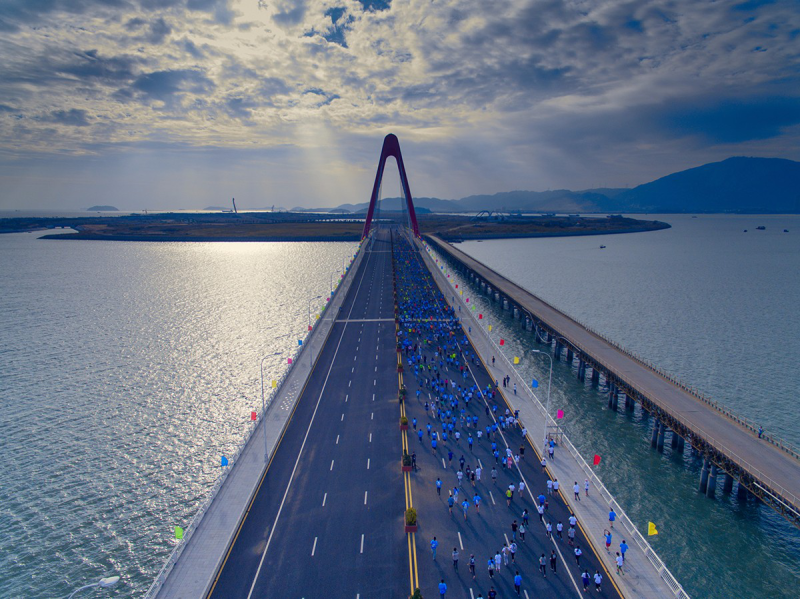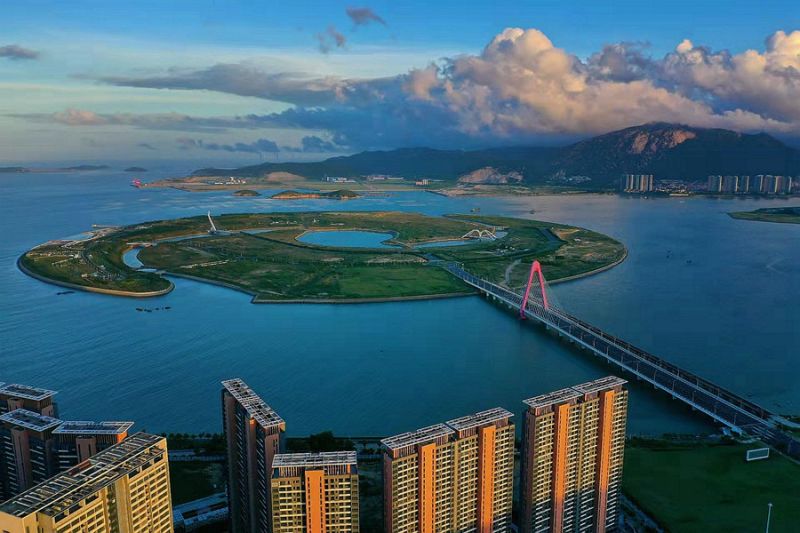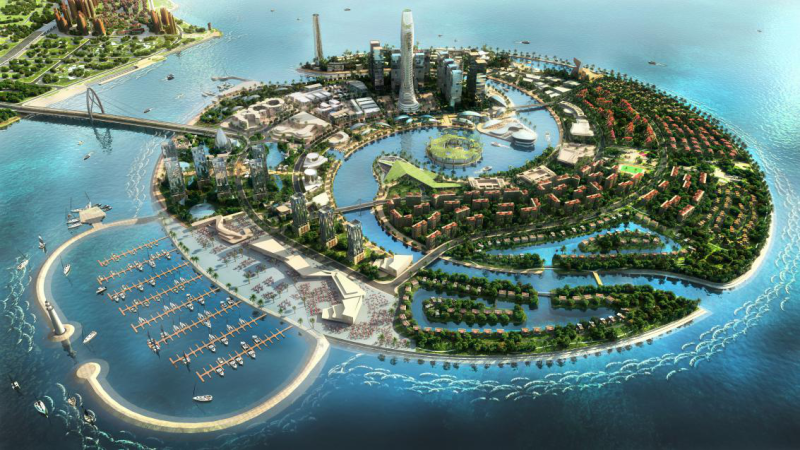Weng Jia
Artificial Islands
In the past 30 years, the Greater Bay Area has developed a high degree of technical proficiency in building artificial islands. Using steel drums to build cofferdams in the ocean, construction crews extracted the seawater from the dammed area and filled it with sand, clay, and earth to eventually form land. Early land reclamation materials came from earth extracted during construction projects. Recent artificial islands are being built further and further from the coast. To construct islands in such locations, people have to use dredgers to extract materials from the bottom of the sea. The oceans were once a legal vacuum, and as a result, artificial islands made it possible to establish self-consistent rules independent from the mainland. In the Greater Bay Area, Shenzhen's early artificial islands were born out of such vacuum. It was not until 2002, when The Law of the People's Republic of China on the Administration of Sea Areas emerged, that the State Council and provincial governments attained the power of land reclamation approvals. Before then, corporation-led land reclamation in Shenzhen, had followed market fluctuation and "the law of the jungle." Since 2002, existing artificial islands have become a foundation for legislation. By 2002, Hong Kong had been reclaiming land for 100 years. The Hong Kong International Airport at Chek Lap Kok and the Hong Kong Convention and Exhibition Center in Wan Chai are public infrastructure projects built on artificial islands.
Today, artificial islands in the Greater Bay Area are no longer dystopias isolated from the mainland, but solutions to urban problems. Some of them are critical nodes of important infrastructural projects, such as the two artificial islands that house the east and west entrances to the underground tunnel for the Hong Kong-Zhuhai-Macau Bridge. Other such islands will be home to public housing projects intended to alleviate housing pressures, such as the artificial islands A and B in the Lantau development project proposed by the Hong Kong government in 2018. Artificial islands in the Greater Bay Area have weakened the significance of political discourse, defied regional differences, bypassed ideological confrontations, and have physically connected Guangdong, Hong Kong, and Macau into a singular infrastructural complex. Inadvertently, however, these islands have also destructed and reshaped the coastal ecosystems. In inflicting the same environmental risk to the entire region, artificial islands compel people to overcome disagreements, divides, and conflicts and to reconsider politics, economics, development, and other long-standing issues in the Greater Bay Area from an ecological perspective.



Rendering of the first large-scale offshore artificial island in China - Pisces Island, located in Zhangzhou Development Zone, Fujian Province. Source: Internet
